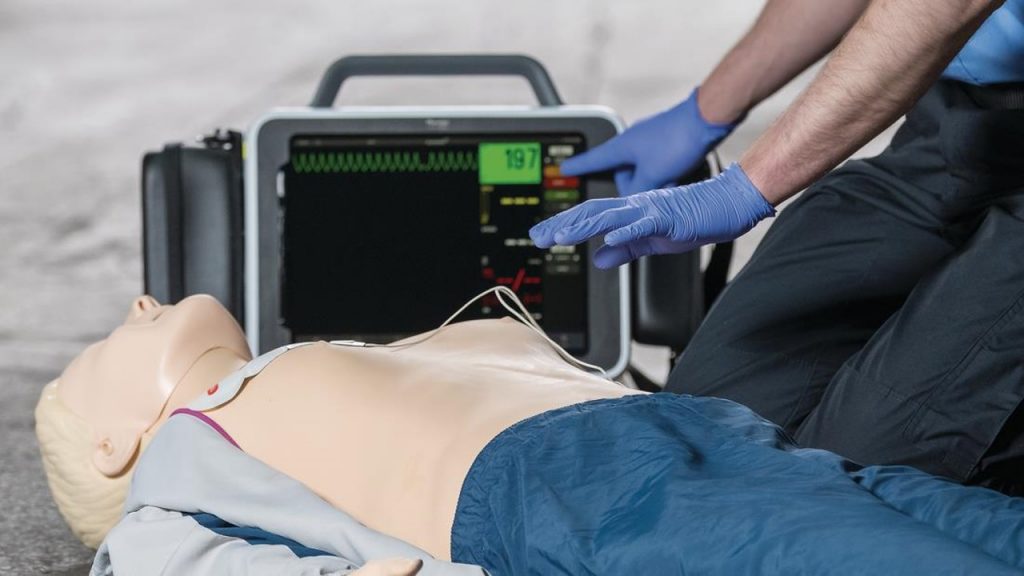Our Simulation Technician Antonio Scalogna tested for you Laerdal Monitor, one of the most advanced tools for military or non-hospital scenarios.
When designing a simulation scenario or a series of scenarios, one must always take into account fidelity, which is not only a factor of the manikin but also of the environment and instrumentation used.
For instance, in the case of an out-of-hospital or military scenario, it is quite unrealistic to use the software of an advanced manikin with its own computer, touch or non-touch. On the contrary, it is very realistic to use a standalone simulated monitor, i.e. not necessarily connected to the manikin; in this case, the overall experience is enhanced but the realism of the manikin is reduced (it is still possible to use two separate controls).
Laerdal Monitor is among the most advanced tools for this kind of scenario.
Thanks to Laerdal Italy, I was able to test and have this device tested on two very different occasions, i.e. classic ALS scenarios within the Simulation Centre and military simulations within a field hospital, i.e. from the transport of the patient to the arrival and complete treatment within the hospital, all with the same monitor.
Design and materials
When I first saw and tried this monitor, I really appreciated the choice of design and materials of the casing, including the side supports. The whole thing is really sturdy and elegant, which I personally really appreciate as it often contrasts with the environment in which it is used.
I supporti laterali sono molto robusti e capienti, riescono a contenere tutti i sensori necessari senza problemi poiché risultano sempre molto ordinati anche durante l’esecuzione dello scenario, i fili non seguono altri strani percorsi, non si attorcigliano attorno alla scocca del monitor defibrillatore, e soprattutto sono fissabili all’interno della stessa.

Functionality and Connection
To call this device a “Simulated Defibrillator Monitor” is very reductive, since we are talking about TruMonitor, the TruCorp app which, in addition to having different graphics of the most famous defibrillators (Philips, Zoll, LifePack, etc.), allows the use of the ventilator with very classic graphics (TruVent), always allowing complete interaction by the learner in both modes.
Instructor side is possible:
- changing parameters, with the possibility of transition time;
- full management of reports, the learner will also be able to consult previously sent reports once the last report has been received;
- start a specific voice, and the audio will be played from the learner’s tablet, i.e. the one embedded in the defibrillator’s body;
A winning feature in my opinion is the type of connection, namely Bluetooth via the same iCloud account set up on both iPads.
In the military environment, within a field hospital, this type of connection made a difference precisely because of its absolute reliability, as communication between iPads, without passing through WiFi, is normally very stable.

Laerdal Monitor and Manikin
In addition to the respiratory monitor, the Little Anne QCPR manikin can be integrated into the Laerdal Monitor, which is automatically detected by the software; again, the connection is absolutely reliable.

PRO
- Modern and robust design
- Very intuitive application
- Instructor-side vital parameters always in the foreground without too many graphic frills
- Connection between Apple devices, i.e. not via WiFi
- Simple and intuitive report management
- Using the CPR feedback manikin
CONS
- Pathology catalogue to be expanded
- Improving the implementation of invasive pressure
- Monitor catalogue expansion
- Only available on subscription
- There is no possibility to print the ECG on the monitor directly on the learner’s iPad side
Final verdict
Laerdal Monitor presents itself as an all-round learning tool, for standalone use for teaching and/or simulation purposes, as well as for use with Little Anne QCPR for CPR feedback.
Appearance is certainly a key part of the device, which is why it looks modern and robust.
The TruMonitor software is very easy to use, even for those professionals who have never seen it before, thanks to the simple graphics and the step-by-step guide for the connection between instructor iPad and learner iPad.
The possibility of transmitting audio directly from the learner’s iPad, normally placed close to the patient, is highly appreciated.











































